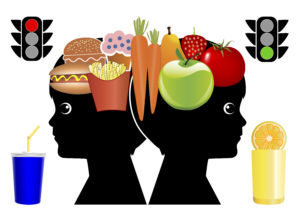Last June, a national survey published online by The Journal of the American Medical Association, showed 40.4% of women in America are obese and 9.9% are extremely obese, while men’s numbers are 35% and 5.5% respectively. Women’s obesity rate (BMI > 30 kg/m2 ) increased from 35.3% and extreme obesity rates (BMI > 40 kg/m2 ) from 7.4% in the past decade, while men’s rates did not increase significantly.

Coauthor Cynthia Ogden, PhD, told Medscape Medical News, “Something is going on with women and not men, but we couldn’t determine from this analysis what that was.” She said the increases were consistent for women regardless of race or other demographic factors. Also after adjustment for the other factors, women who had education beyond high school were significantly less likely to be obese than those with only a high school education. Non Hispanic black women had the highest numbers in the study, and the numbers were consistent across age groups: 56.7% were obese for ages 20 to 39 and 57.5% for all ages 40 and above.

Dr. Ogden also co-authored a companion obesity study by CDC researchers that focused on children and teens. That study found that obesity among adolescents ages 12 to 19 had doubled over the past 25 years, to 20.6%, and extreme obesity in that age group more than tripled, from 2.6% to 9.1%. The editorialists said both studies call for an urgent look at new approaches. “Perhaps new incentives are needed to encourage the food industry to work with families and the medical community to prevent obesity,” they assert. “Could some form of tax credits be used to ensure that if food company profits decline with the phase out of unhealthy products and failure or slow adoption of new products, the industries will be protected from shareholders’ concerns? Are partnerships between medical organizations and the food industry feasible, such as a local healthy eatery providing nutrition or cooking classes at a medical clinic? The stakes for the health of people in the United States are high, and creative solutions are needed,” they conclude.

The American College of Obstetricians and Gynecologists says that “Obesity prevention must start with women of childbearing age,” as studies have shown obesity starts early and continues through life. And because parents determine what kids eat, prevention effort must encompass entire families, Drs. Zylke and Bauchner write, acknowledging, however, that even with motivation, lack of convenient and healthy food sources may be a roadblock to healthy eating, especially in poorer neighborhoods.
In conclusion, while obesity rates in men have remained relatively stable, clearly obesity rates for women, adolescents and teens have been on the rise over the last decade. As researchers continue to look for answers as to why, it’s important to note for the public in order to raise awareness among these populations in an effort to change behaviors and lifestyles in support of weight reduction and improved health. As moms make lifestyle and diet changes for themselves, hopefully these changes will “trickle down” and have a positive impact on the rest of the family as well.
Source: Marcia Frellick / Medscape.com: “Obesity Among Women in U.S. hits 40%; For Men It’s 35%”
Original Article – http://www.medscape.com/viewarticle/864520









